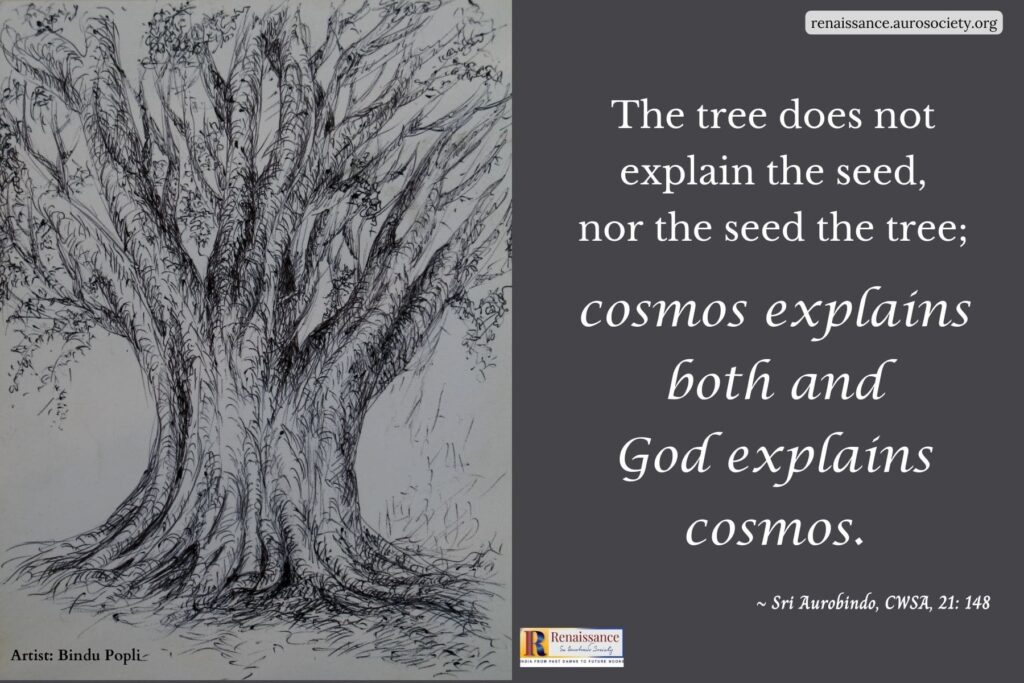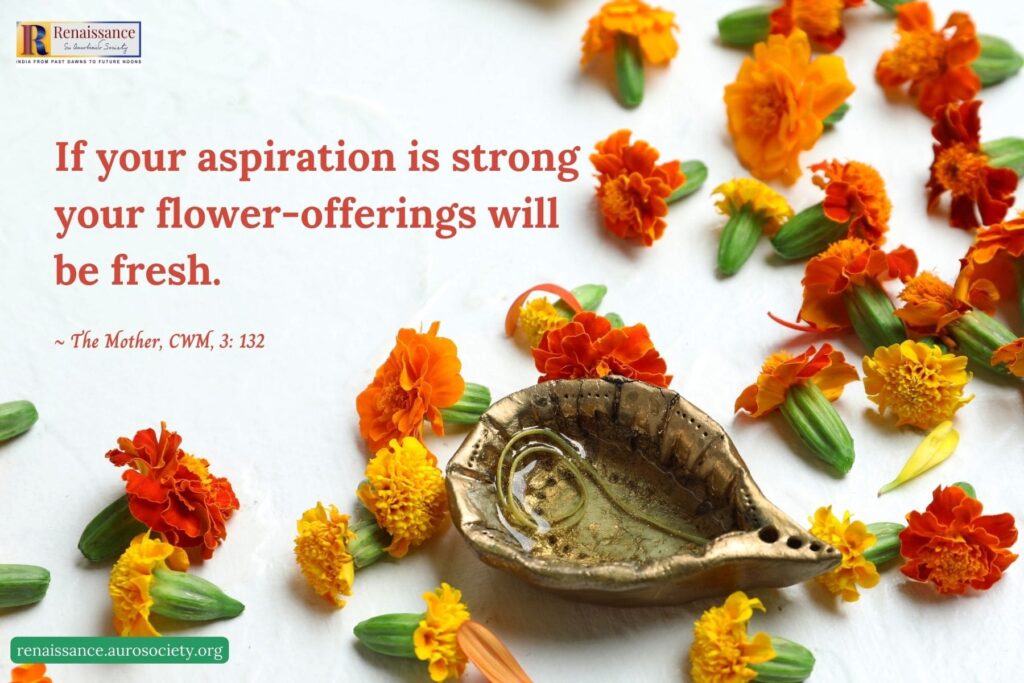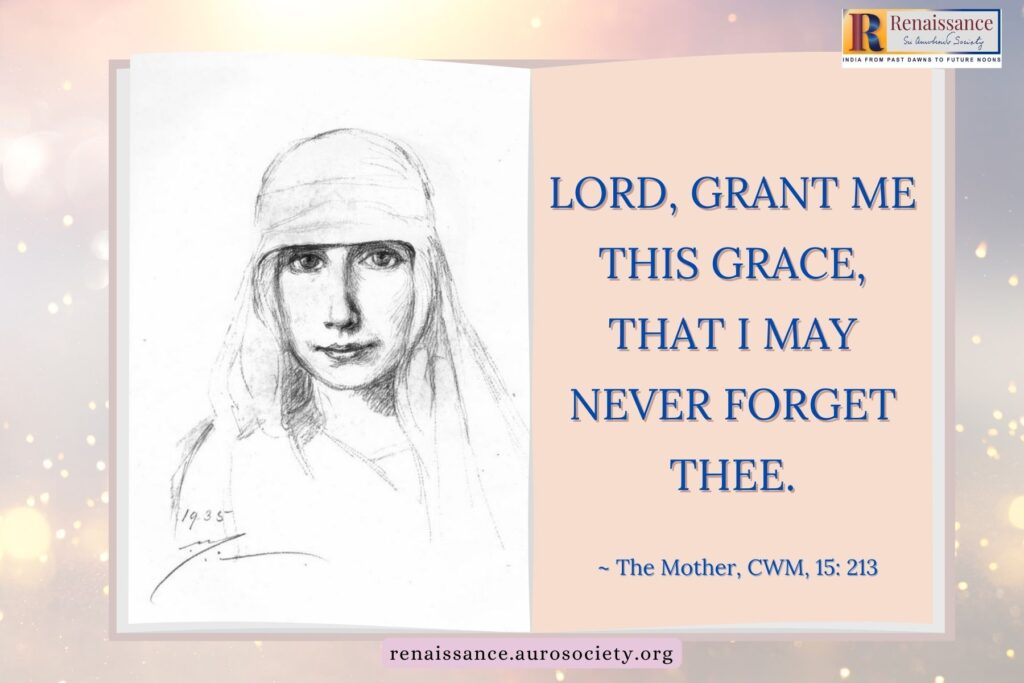Editor’s note: Building up on the Sincerity and Gratitude themes from our previous issues, this heartfelt reflection by a US-based author speaks of how sincerely persevering in one’s sādhanā becomes the key to allow the heart to experience a deeper gratitude and peace. Emphasising a life-affirming spirituality and sharing some insights from personal experience, the author gently reminds us of the need to gradually grow in equanimity, which in turn is possible only with the Divine Grace and perseverance in one’s sādhanā.

दुःख में सुमिरन सब करे सुख में करे न कोय।
जो सुख में सुमिरन करे दुःख काहे को होय ॥
Dukh mein sumiran sab kare, sukh mein kare na koi
Jo sukh mein sumiran kare, dukh kahe ko hoye
In sorrow, everyone remembers Him; in joy, do none;
For he who remembers Him in joy, how can sadness ever come?
(Sant Kabir)
There is a hubris that comes with sādhanā, after some time, a feeling of imperviousness to the vicissitudes of life. After hearing about stitha prajñā and the mahāvākyas enough, one imagines that he or she has risen above it all, that one now has viveka and vairāgya, that having intellectually understood that the world is mithyā and only Brahman is real and we are that Brahman, samsāra has been conquered.
And then life comes along and gives us a much-needed kick in the butt. And all that philosophizing, all that delusional optimism about one’s progress and growth on the path spiritual, evaporates. We realize that so much of what we have learned and memorized still only rests on the tip of our tongue, has not yet been digested and internalized into true realization.
Sādhanā Prepares
When my father died, it astonished me how unprepared I felt for it. I had spent years of sādhanā and pilgrimage, years of anticipatory grief and reflection, years of anushthāna in his name to prepare him for the transmigration of the jīva and me for the mourning of his loss.
Yet, it took years to rebuild the depleted stores of my sādhanā and to psychically move on, to learn that there are some epochal moments in life from which there is no full recovery, no complete healing, that you sew back your psyche around that hole, that spot of searing loss that will remain ever-fresh, ever-painful.
I had been prepared through the grace of īśvara and my gurus, strengthened through sādhanā. But that preparation is not anaesthesia; it is a grounding, a building of bulwarks around the system so that when the pain comes, one does not collapse into depression or dysfunction.
The pain still comes but is manageable.
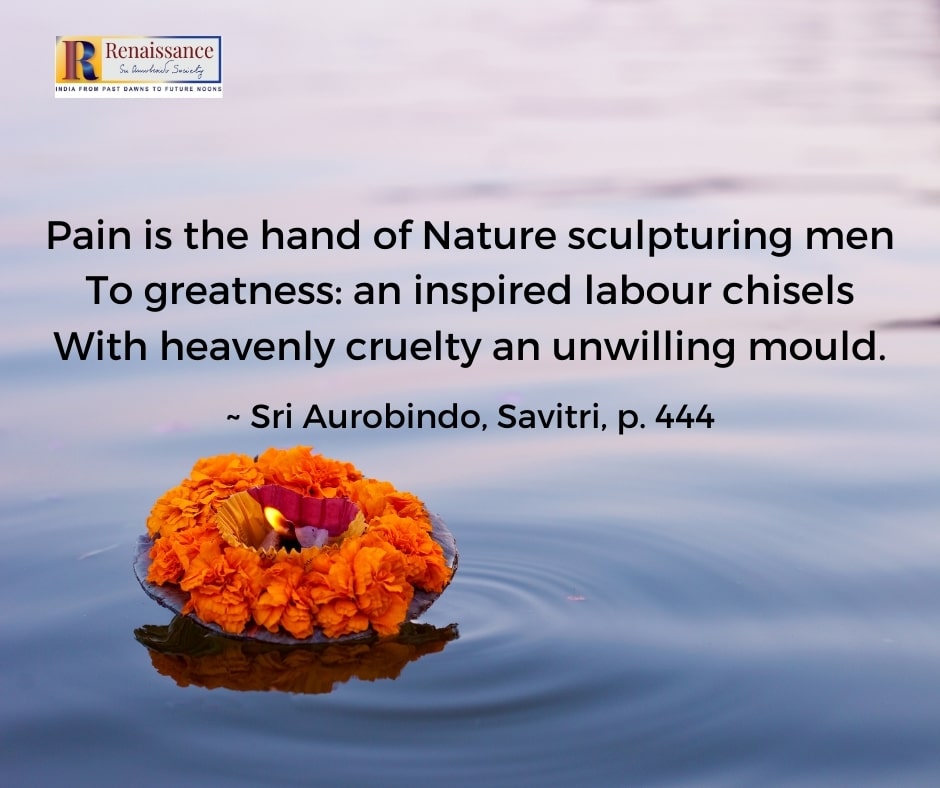
As per a story when Thakur’s nephew passed away, Sri Ramakrishna Paramahamsa was disconsolate and wept. It is a misconception that sādhanā numbs one to emotion. In fact, with sādhanā, the mind becomes tranquil and transparent so that each emotion is felt more clearly and deeply without distraction or cloudiness.
READ:
Egoism, Vanity and Pride: Becoming Conscious with Guidance from Sri Aurobindo
When the lockdown started, I was quite placid — it was a time for sādhanā, for living a lifestyle of retreat and isolation, a time for renewal of discipline and leading a more yogic life. And for the most part that has been true. I am indeed grateful for this opportunity even while the devastating toll in life and health, in economic inequality and loss, is sobering and tragic.
I did not want to admit to myself or to others close to me that despite all of that, despite all of the energy with which I threw myself into work, into finishing up school, in writing and attending classes of various kinds, there was also a psychic toll of being separated from my husband by the seven seas and not knowing when that separation will end. The ego in me believed I should be beyond all of that, that I should have risen above this, that I already knew philosophically all the truths that show the falseness, the maya, of these sorrows.
But that too is a misconception. Dharma and sādhanā do not ask us to become automatons. If even Sri Rama could feel the anguish of being separated from Sita, then why would we not be allowed such tenderness in our own lives?
The Substance of Sādhanā
The focus of practice is not to rid ourselves of sentiment and feeling. What is required is to purify them from gross neediness and maudlin emotion to progressively more and more refined bhāva that is not centered on the ego-self but is rather a sattvic flow of compassion, amity and oneness with the entirety of srishti, of sarvātma bhāva, of gratitude and wonderment at the play and grace of the Divine. Sādhanā and the practice of bhakti is what makes this possible.
People have a mistaken idea that spirituality is about miracles, about siddhi and mystical visions. Yes, all that can happen, but all of that is just the sizzle on the surface, not the substance of what sādhanā is about.
The test of sādhanā is just to stick to one’s practice. And like the proverbial kettle that never boils when it’s watched, we must just keep doing for a long period of time without expecting or hungering after any results.
In time, you will feel the difference within. You will feel when you close your eyes and start the rolling of the beads of the mālā, that there is something real happening. You will feel that every utterance of the mantra is accumulating into something, this force, this mass of energies that keeps you afloat, that sustains you through the vicissitudes of life.
The test of bhakti is not seeing a vision of God or of having fantastic samādhi experience. It is simply this — feeling the presence of your ishta in your life. And even when you cannot feel Him/Her, knowing that the moment you call out their name, there is someone who is listening and watching over you. In the beginning, it may just be a hope or a kindling of faith; in time, it becomes knowledge that is steadfast and adamantine.
We should never think that sādhanā is just for the sages. I am inconsistent and blundering in my practices, yet even that little bit of imperfect sādhanā has transformed my life so much. If even I have experienced this, then surely anyone can with even just a few minutes of practice a day.
Nowadays, too much of our dharma has been taken over by sādhus. In times of yore, we had so many householder rishis who could seamlessly integrate sādhanā with the reality of samsāra and family life. Nowadays we have too little of that and as a result people confuse pure ascetism with dharma. While restraint and brahmacharya are integral to sādhanā, that does not mean that the life of a sannyāsin is appropriate for many or most of us. It is actually quite the opposite.
It must also be said that if one is serious about sādhanā, and if one wants to give up the valleys of grief, one must also give up the peaks of joy. Both are ephemeral, both transitory and illusive. In exchange for giving up the extreme joys and sorrows of life, giddiness and despair, comes something significantly more precious — a contentment and welling up of gratitude, a constant flow of the peace that passeth all understanding.
This is something I have only glimpsed but it is where I want to reach.
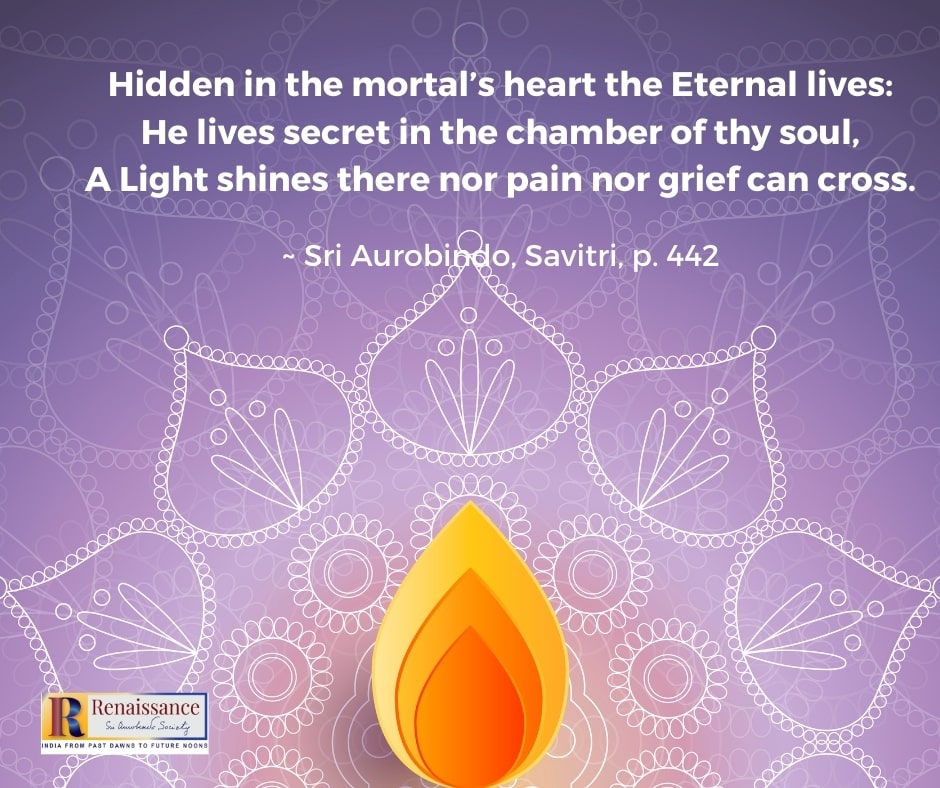
Gratitude for the Travails
So the thing I most feel now is a deep upwelling of gratitude, gratitude to Sri Radha-Krishna for this time with my husband. I feel grateful that all the things which had to go right for us to have this interlude together did go right.
But I also feel grateful for the hard times, for the uncertainty and separation, for the travails that have passed and that are yet to come. It is said that Kunti prayed to her nephew to be visited with sorrows because it was through sorrow that she had felt the presence of Krishna. It is through these times of testing and tempering that we grow, through which we come in order to be able to more fully appreciate the blessings that have been bestowed upon us.
Also see:
Grace and Gratitude
Sorrow comes from a sense of entitlement. Who am I to say that I deserved forty or fifty years with my father rather than the years I was lucky enough to have with him? He was my kindred spirit, and his memories are enough to still fill my heart with joy. Or who am I to say that these past eighteen months belonged to my husband and me together?
We come into the world with nothing and leave with nothing. That which we get along the way is just the generous blessing bestowed upon us by the One without whom we could not draw a breath or open an eyelid. This gratitude is not specific. It is just a recognition of that infinite ocean with waves after waves of blessings that are always flowing for all of us, all the time, in all ways. It is just that we have to have the eyes to see it.
There is love and then the source of all love; there is joy and then the source of all joy; there is life and then the source of all life. The eye can perhaps one day be jaded even by the sight of such a beautiful ocean. Yet the heart never tires to think of the One who reclines against the serpentine bed in the ocean, the heart never tires of the infinite beauty and bliss that is Krishna.
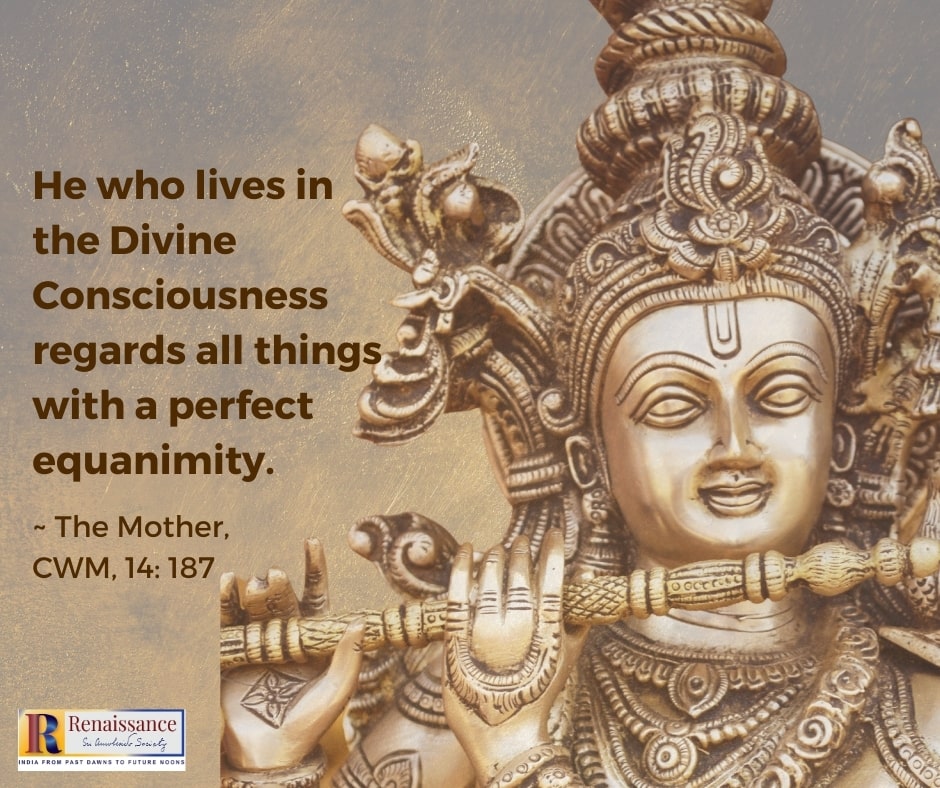
~ Design: Beloo Mehra

